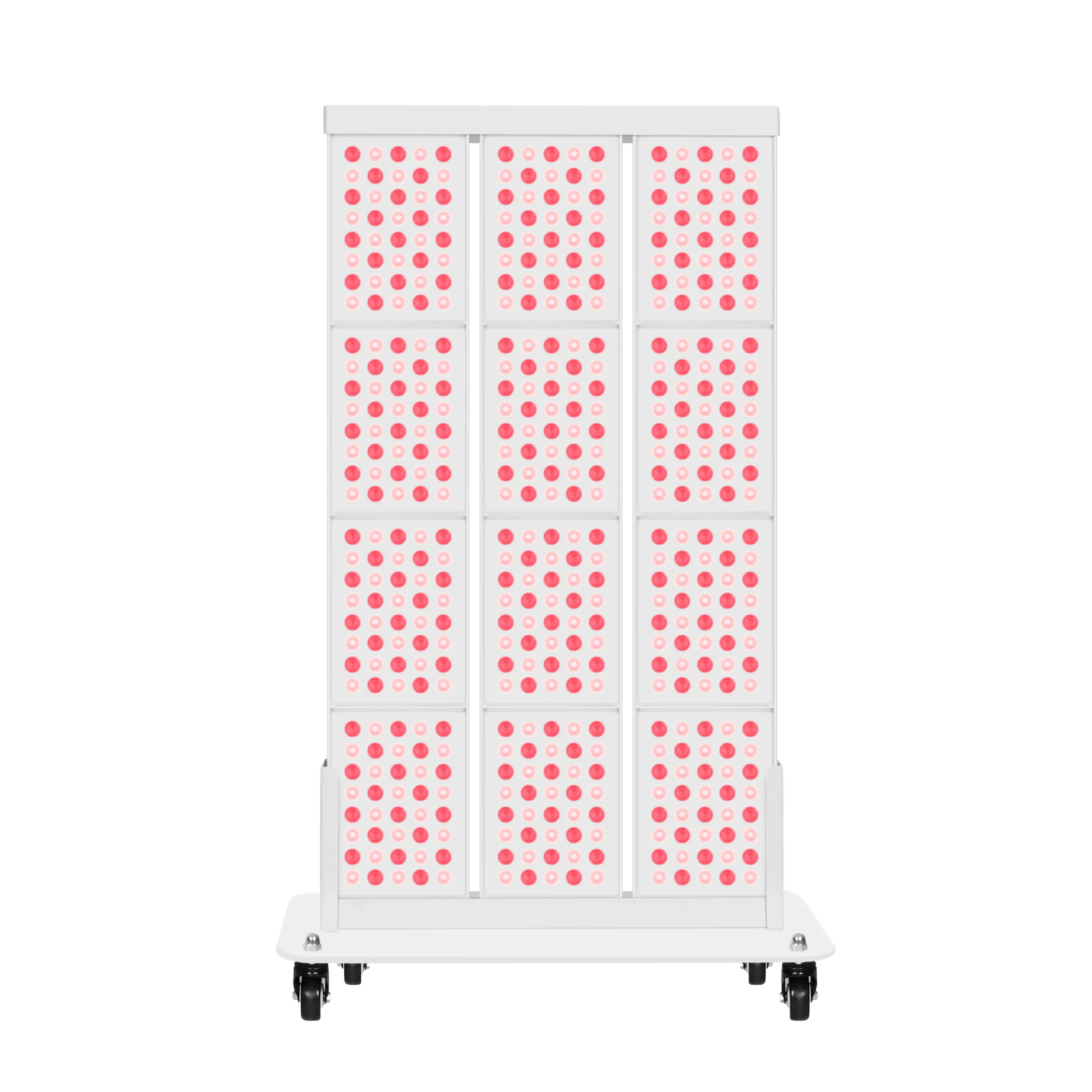Red Light Therapy Risks What the Science Really Says
In recent years, red light therapy has become a buzzword in health and wellness circles. Its promises range from anti-aging benefits to pain relief, but what about the potential risks? This article delves into the science behind red light therapy, examining its safety profile and the risks involved.
Red light therapy, also known as low-level laser therapy (LLLT) or photobiomodulation, involves using specific wavelengths of light to penetrate the skin. The light stimulates cellular function, which can lead to various health benefits. It’s often used for skin rejuvenation, wound healing, and reducing inflammation.
The Science Behind Red Light Therapy
The core principle of red light therapy is its ability to harness specific wavelengths of light. These wavelengths are typically in the range of 630-880 nanometers. They are believed to penetrate the skin effectively, reaching cells and tissues that can benefit from stimulation. This penetration is crucial as it allows the light to influence cellular processes directly, promoting healing and regeneration.
Cellular Function and Mitochondria
At the heart of red light therapy’s mechanism is its effect on the mitochondria, often described as the powerhouse of the cell. By enhancing mitochondrial function, red light increases the production of adenosine triphosphate (ATP), the primary energy carrier in cells. This boost in cellular energy can accelerate healing processes, improve cell function, and ultimately lead to a range of health benefits.
Applications in Modern Medicine
Red light therapy is not limited to cosmetic and wellness applications. In modern medicine, it finds use in various therapeutic contexts. From aiding recovery in sports medicine to supporting the treatment of chronic conditions like arthritis, the therapy’s versatility is one of its most appealing characteristics. This broad applicability has led to increased interest and research in the medical community.
The Safety Profile of Red Light Therapy
When considering any treatment, safety is a primary concern. Red light therapy is generally considered safe when used appropriately. It is non-invasive, painless, and requires no downtime, making it an attractive option for many.
Why People Choose Red Light Therapy
Before we explore the risks, it’s essential to understand why people use red light therapy. Some common uses include:
Skin Health: Reducing wrinkles, scars, and stretch marks. This benefit is particularly popular in the cosmetic industry, where non-invasive anti-aging treatments are in high demand. Regular sessions can lead to noticeable improvements in skin texture and appearance.
Pain Relief: Alleviating joint pain and muscle soreness. Athletes and individuals with chronic pain conditions often turn to red light therapy as a complementary treatment to help manage discomfort and accelerate recovery.
Mental Health: Improving mood and reducing symptoms of depression. Emerging research suggests that red light therapy may have a positive impact on mental health by influencing biochemical pathways associated with mood regulation.
Scientific Validation of Safety
Numerous studies have confirmed the safety of red light therapy when used properly. According to a 2013 review published in “Photomedicine and Laser Surgery,” there are minimal adverse effects, especially when compared to more invasive procedures. The non-thermal nature of red light means it doesn’t cause burns or significant tissue damage, which is a major advantage over other light-based therapies.
Regulatory Approvals and Guidelines
In many countries, regulatory bodies have approved certain red light therapy devices for specific medical uses. This regulatory oversight ensures that devices meet safety standards and are effective for their intended use. Users are encouraged to choose devices that have received such approvals to ensure they are using a product that adheres to safety and efficacy standards.
Potential Risks of Red Light Therapy
Despite its safety profile, red light therapy is not without risks. It’s crucial to be aware of these before starting treatment.
Eye Safety Concerns
One of the most significant concerns is eye safety. Direct exposure to red light can potentially harm the eyes, especially when using high-intensity lasers. Protective eyewear is recommended to prevent any damage. Users should ensure that their eyes are adequately shielded during therapy sessions, as prolonged exposure without protection can lead to discomfort or more serious eye issues.
Overuse and Skin Sensitivity
While red light therapy is non-invasive, overuse can lead to skin irritation or sensitivity. It’s crucial to follow recommended guidelines for exposure times to minimize any adverse effects. Individuals with sensitive skin or those prone to skin conditions should approach therapy with caution, starting with shorter sessions to assess their skin’s response.
Photosensitivity Reactions
Individuals with certain conditions or those taking medications that increase photosensitivity should exercise caution. Photosensitivity can result in skin reactions when exposed to light. It’s advisable to consult a healthcare provider before starting therapy if you have concerns about photosensitivity. Medications like certain antibiotics or treatments for acne can increase the risk of adverse reactions.
The Role of Dosage in Safety
The effectiveness and safety of red light therapy heavily depend on dosage. The “dose” refers to the intensity and duration of the light exposure.
Determining the Correct Dosage
A study published in “Lasers in Surgery and Medicine” emphasized the importance of appropriate dosing. The correct dosage is crucial for achieving desired results while minimizing risks. Too little exposure may not yield results, while too much can lead to adverse effects. It’s important for users to understand that more is not always better, and finding the right balance is key.
Guidelines for Safe Use
Here are some general guidelines to ensure safe use:
Start with Short Sessions: Begin with shorter sessions to gauge your body’s response. Gradually increasing exposure can help you find the optimal duration for your needs.
Follow Manufacturer’s Instructions: Always adhere to the device’s instructions for use. Each device may have specific guidelines based on its design and intended use.
Consult a Professional: If unsure, consult with a healthcare provider or a qualified professional. They can offer personalized advice based on your health status and goals.
Importance of Professional Supervision
For those using red light therapy for medical purposes, professional supervision can enhance safety and effectiveness. Healthcare providers can offer insights into the appropriate settings and duration based on individual health conditions. This supervision can be particularly beneficial for individuals with complex medical histories or those using red light therapy as part of a broader treatment plan.
Special Considerations for Certain Populations
While red light therapy is generally safe, certain populations should take extra precautions.
Pregnant Women
There is limited research on the effects of red light therapy during pregnancy. Until more is known, it is advisable for pregnant women to avoid this therapy or consult their healthcare provider. The lack of comprehensive studies means that potential risks are not well-understood, and caution is warranted.
Children
The use of red light therapy in children should be approached with caution. Always seek medical advice before considering this treatment. Children’s developing bodies may respond differently to therapy, and professional guidance is crucial to ensure safety and appropriateness.
Individuals with Chronic Health Conditions
For those with chronic health conditions such as epilepsy or autoimmune disorders, red light therapy should be considered carefully. These conditions may influence how the body responds to treatment, and it’s important to consult with healthcare providers to assess potential risks and benefits.
Customers Also Ask:
Does red light therapy have any adverse effects?
Red light therapy generally has minimal adverse effects, with rare occurrences of mild skin irritation or temporary eye discomfort being the most commonly reported issues.
What do doctors say about red light therapy?
Many doctors acknowledge the potential benefits of red light therapy and consider it a safe treatment option when used correctly. However, buying from a reputable manufacturer and consulting with a healthcare professional is always advisable before starting any new therapy.
Is red light therapy safe daily?
Red light therapy is generally safe for daily use. However, it is recommended to buy from a reputable manufacturer, follow their guidelines and consult with a healthcare professional to determine the appropriate duration and frequency of treatment for your specific needs.
What are the advantages and disadvantages of red light therapy?
The advantages of red light therapy include:
Its non-invasive nature.
Potential benefits to skin health.
Relief of joint pain.
Muscle recovery.
Improved mood.
It is generally well-tolerated with very few side effects. Disadvantages may include the need for consistent, regular treatment to see noticeable results, and the need to wear protective eyewear to prevent eye discomfort or potential vision impairment.
For more information, please check out other blogs about red light therapy:
5 Health Benefits of Red Light Therapy
Red light therapy promotes recovery
Red Light Therapy for Anti-Aging
Red Light Therapy for Weight Loss
Why Home Yoga + Red Light Therapy is the Perfect Combination
How to choose the best red light therapy mat
References:
https://www.ncbi.nlm.nih.gov/pmc/articles/PMC3499892/
https://www.nature.com/articles/s41598-021-02311-1
https://pubmed.ncbi.nlm.nih.gov/28619506/
https://journals.plos.org/plosone/article/figure?id=10.1371/journal.pone.0066448.g002
https://pubmed.ncbi.nlm.nih.gov/22595370/
https://nyaspubs.onlinelibrary.wiley.com/doi/abs/10.1196/annals.1352.040
https://www.tandfonline.com/doi/abs/10.1080/14764172.2017.1326609?journalCode=ijcl20
https://pubmed.ncbi.nlm.nih.gov/16989189/
https://agsjournals.onlinelibrary.wiley.com/doi/full/10.1111/j.1532-5415.1992.tb01824.x
https://www.ncbi.nlm.nih.gov/pmc/articles/PMC2491942/
Post time: 11-06-25


